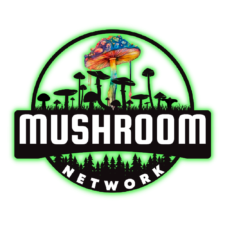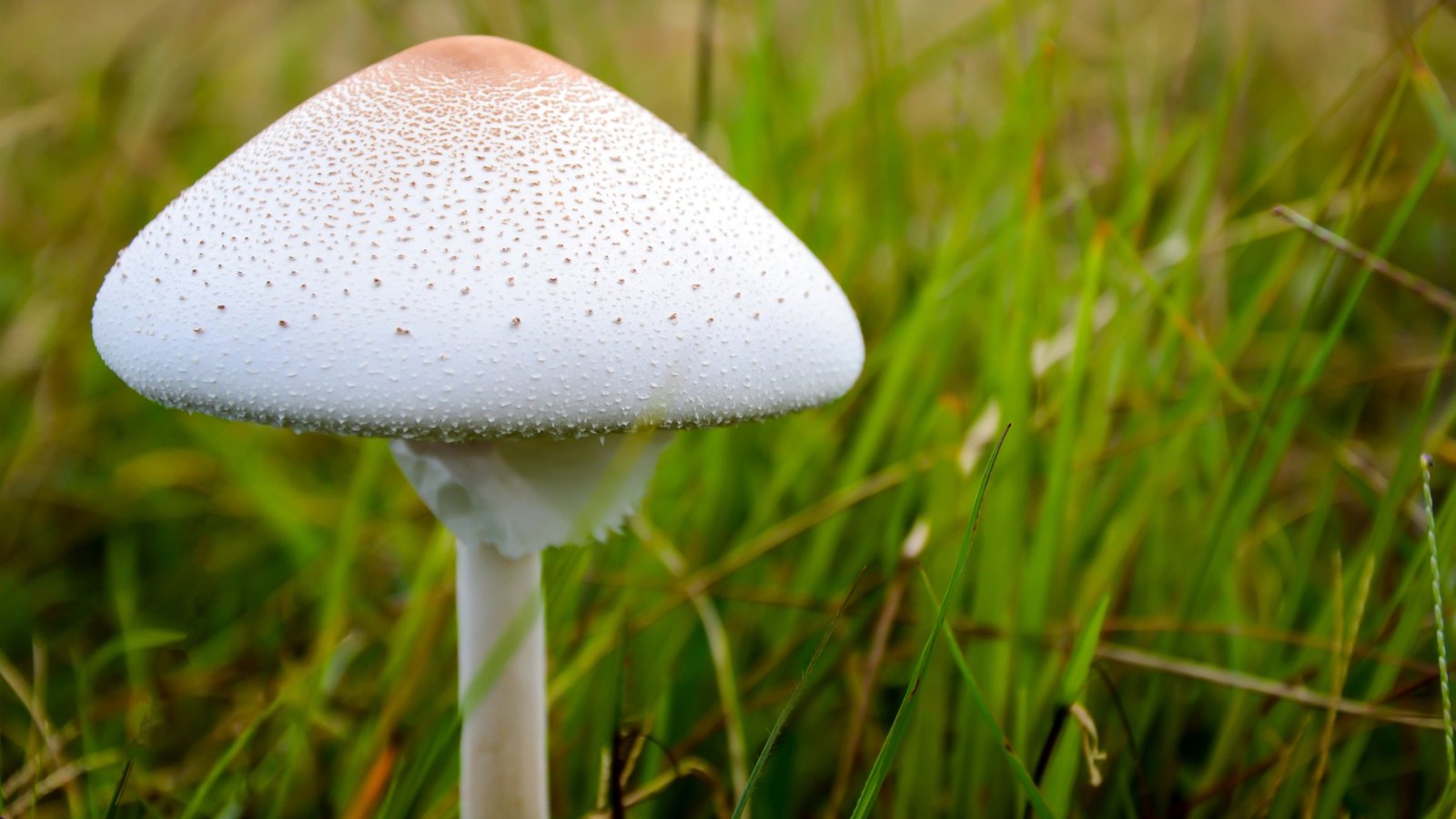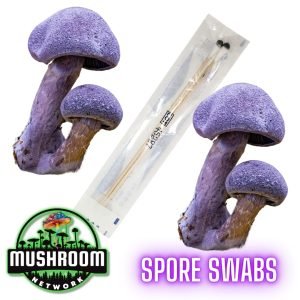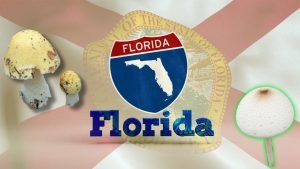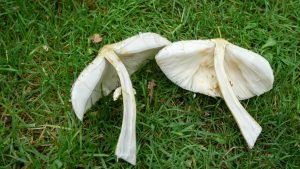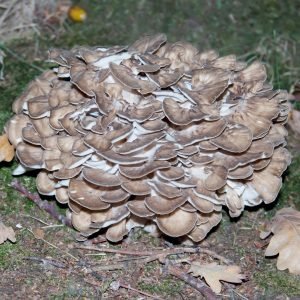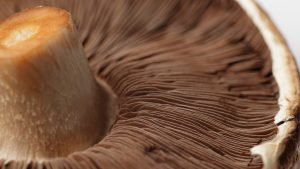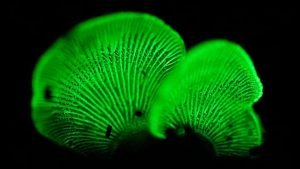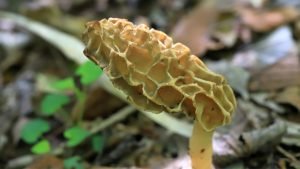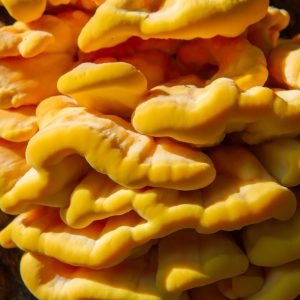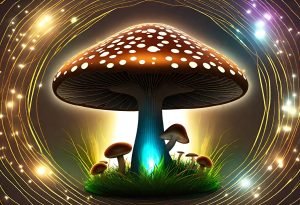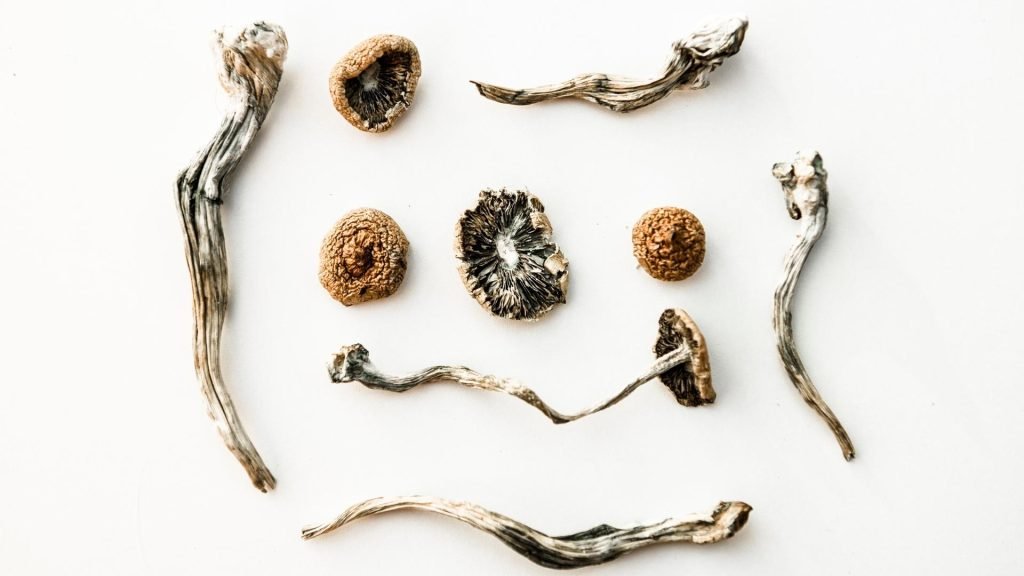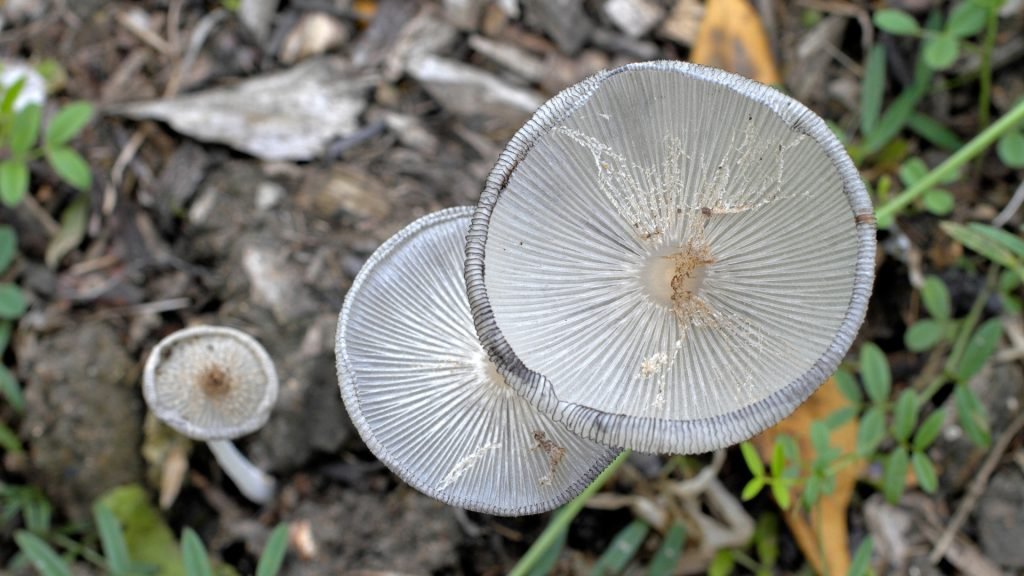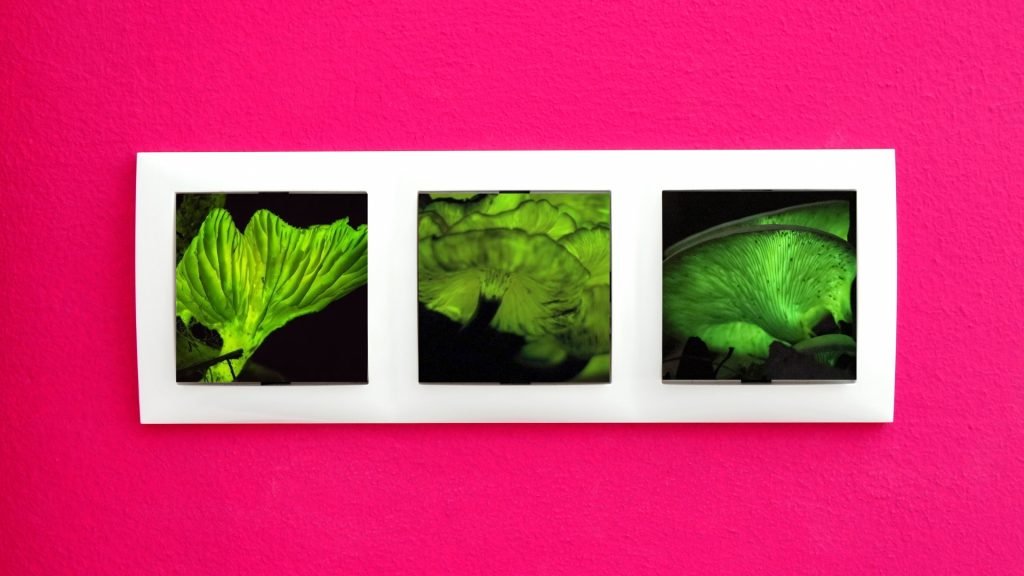SCIENTIFIC NAME:
(Chlorophyllum Molybdites)
COMMON NAME(S):
False Parasol | Green Vomiter | Green-Spored-Parasol | Green Gill | Fairy Ring Mushroom | Yard Mushroom | Green Spotted Lepiota
I-NAME:
FVOM
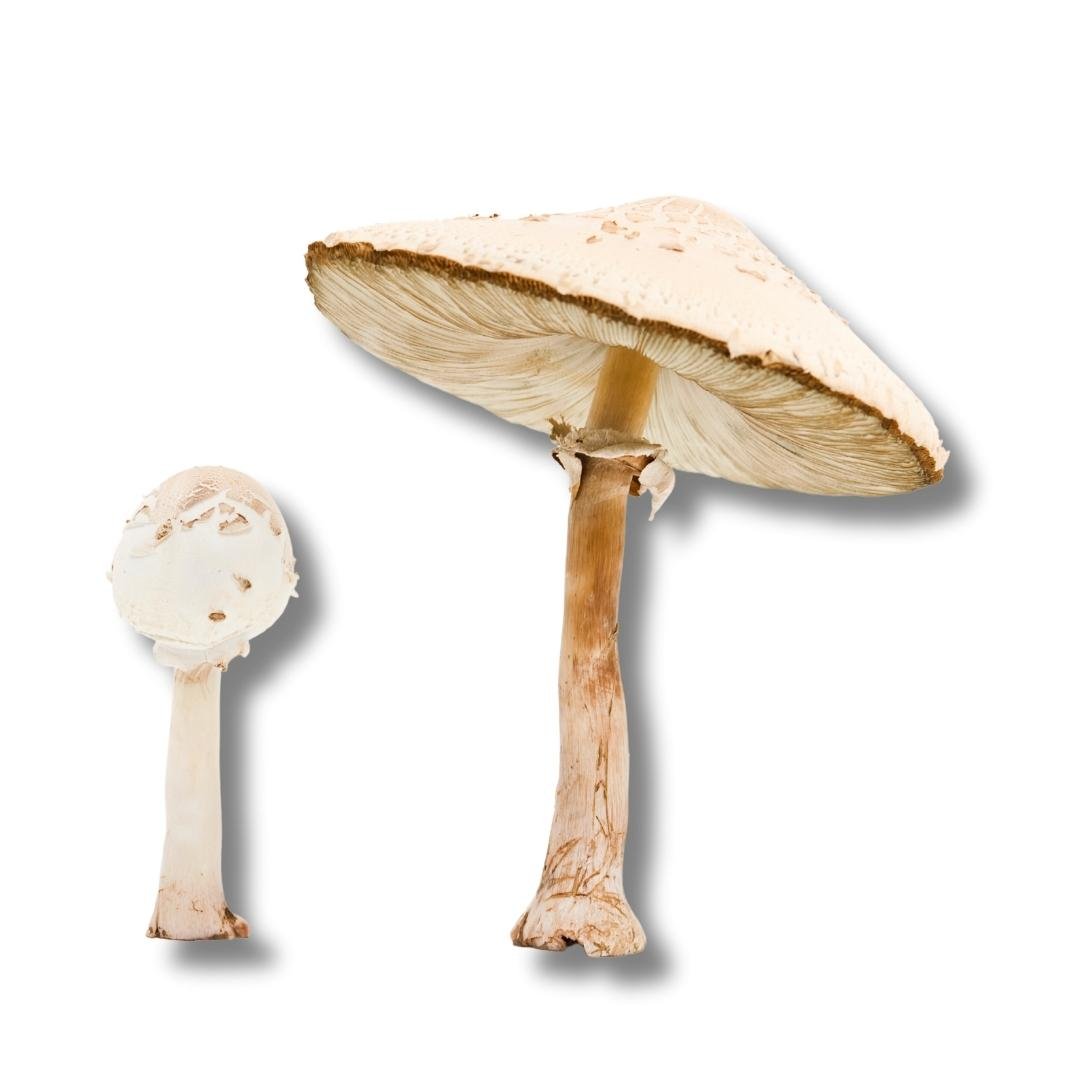
SPORE COLOR:
GREEN
Traversing the landscape of fungi, one encounters the deceptive beauty of Chlorophyllum Molybdites, commonly known as the Green-Spored Lepiota, the Green Vomiter, or the False Parasol. While its allure may beckon many, a cautionary tale lingers behind its facade.
Description:
Chlorophyllum Molybdites is one of the most widespread and frequently encountered lawn mushrooms. It is a gilled mushroom, with a whitish cap that’s broad and scaly, often adorned with a central knob. The stem is tall, sturdy, and tapers slightly upwards. As the mushroom matures, the gills turn a distinct greenish color, which is a stark contrast to the white cap and stem.
Intended Uses:
- 🏫 Teaching and Education: Useful in teaching accurate mushroom identification.
- 👩🔬 Research: Study its unique green spores and its chemical makeup.

Historical & Cultural Info:
Widespread primarily in North America, the Chlorophyllum Molybdites has been a recurring figure in many accidental poisonings. Its appearance can be deceivingly similar to several edible mushroom species, leading to its notorious reputation. Its history is fraught with tales of accidental consumption, making it an exemplar of the adage, “all that glitters is not gold“.
Chemical Composition:
The exact chemical composition of Chlorophyllum Molybdites is complex and not fully delineated. However, it’s known to contain gastrointestinal irritants, which upon ingestion can cause severe vomiting, diarrhea, and cramps.
Health Benefits:
There are no documented medicinal or health benefits of this mushroom. On the contrary, its consumption is strictly discouraged due to the adverse effects it has on the gastrointestinal system.
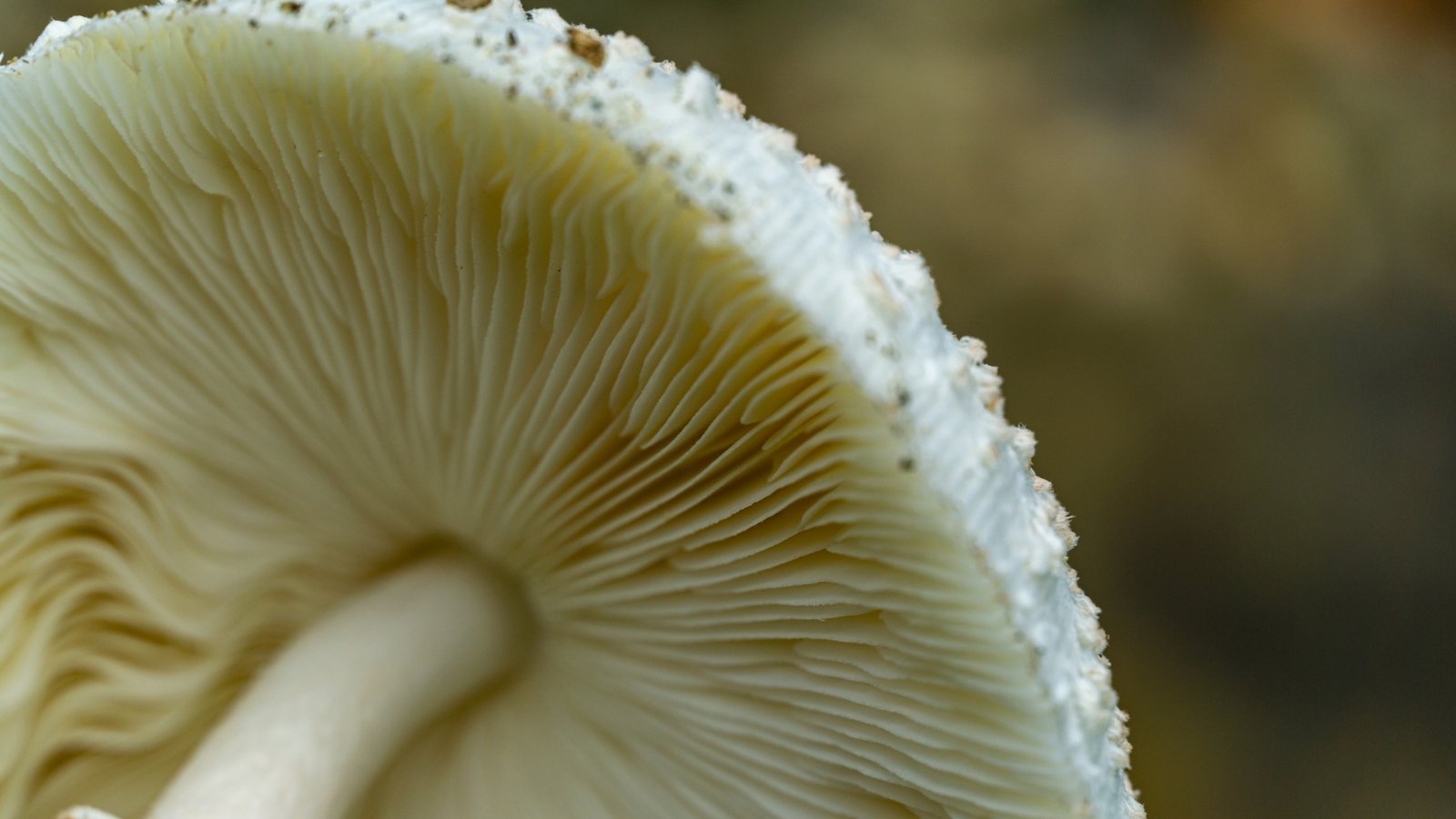
Cautions & Warnings:
Chlorophyllum Molybdites is toxic when ingested. It can cause severe gastrointestinal distress and should never be consumed. Accurate identification is crucial when foraging for mushrooms to avoid this deceptive species.
Final Considerations…
Chlorophyllum Molybdites, a paradox of beauty and danger, stands as a testament to nature’s dualities. As you venture through the vast catalog of the 🍄 Mushroom Network Marketplace, remember the Green-Spored Lepiota – a mesmerizing muse with a veiled warning. Secure your quest into the world of fungi today, but tread carefully, for like the revolving genetics, time waits for none.
Don’t forget to check out the 🍄 Mushroom Network’s Marketplace to see what’s available. But hurry, our shelves are constantly evolving, and you wouldn’t want to miss out on this wonderful mushroom. Join our growing network of Patrons, Genetics, and Mycologist Vendors only on the 🍄 Mushroom Network!
No posts found!
Related Articles:
False Parasol (Chlorophyllum Molybdites)
SCIENTIFIC NAME: (Chlorophyllum Molybdites) COMMON NAME(S): False Parasol | Green Vomiter | Green-Spored-Parasol | Green...
Read More...Florida’s Toxic Beware: Mushrooms to Avoid
About This Article: Florida’s beauty hides a toxic secret! 🍄 Dive into our guide on...
Read More...Green But Not Gold: The Deceptive Beauty of Chlorophyllum Molybdites
About This Article: Ready to meet the Shrek of the mushroom kingdom? Dive into our...
Read More...Other Mushroom Species To Research:
Hen of the Woods (Grifola Frondosa)
Scientific Name: Grifola Frondosa COMMON NAME(S): Hen of the Woods | Maitake The Hen of...
Read More...Portobello Mushroom (Agaricus Bisporus)
Greetings, fellow mycophiles and curious minds! Welcome to a comprehensive exploration of one of the...
Read More...Lion’s Mane (Hericium Erinaceus)
Dear Mycelium enthusiasts, scholars, and the fungi-curious alike, buckle up as we embark on a...
Read More...Bitter Oyster (Panellus Stipticus)
Welcome, esteemed mycologists and curious minds! Today, we delve into the intriguing world of Panellus...
Read More...Other Recommended Reads:
Mushrooms on the ISS: Sustenance and Science
Space, often seen as humanity’s final frontier, has been the setting for numerous groundbreaking experiments....
Read More...Gourmet Galaxies: A Culinary Tour of Edible Mushrooms
About This Article: Embark on a flavor-filled voyage with ‘Gourmet Galaxies,’ exploring the culinary wonders...
Read More...Chicken of the Woods: The Tasty Forest Delight
A culinary-focused article exploring recipes and preparation methods for this mushroom. Chicken of the Woods:...
Read More...Modern Renaissance: The Resurgence of Psychedelic Fungi in Therapy
ADMIN. ONLY PAGE NOTE Journey through the ‘Modern Renaissance’ of psychedelic fungi in therapy. 🍄...
Read More...Whoa there, Spore Sport! 🍄 Looks like you’re not logged in yet. Don’t you know what you’re missing? MYCO-CREDITS! Imagine all the fungal fun you could have. It’s like finding a Morel in May and not picking it. Tragic, right? Log In or Become a Myco-Patron and start racking up those credits. It’s more rewarding than finding a mushroom in your backyard! 🌟🏡
